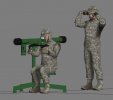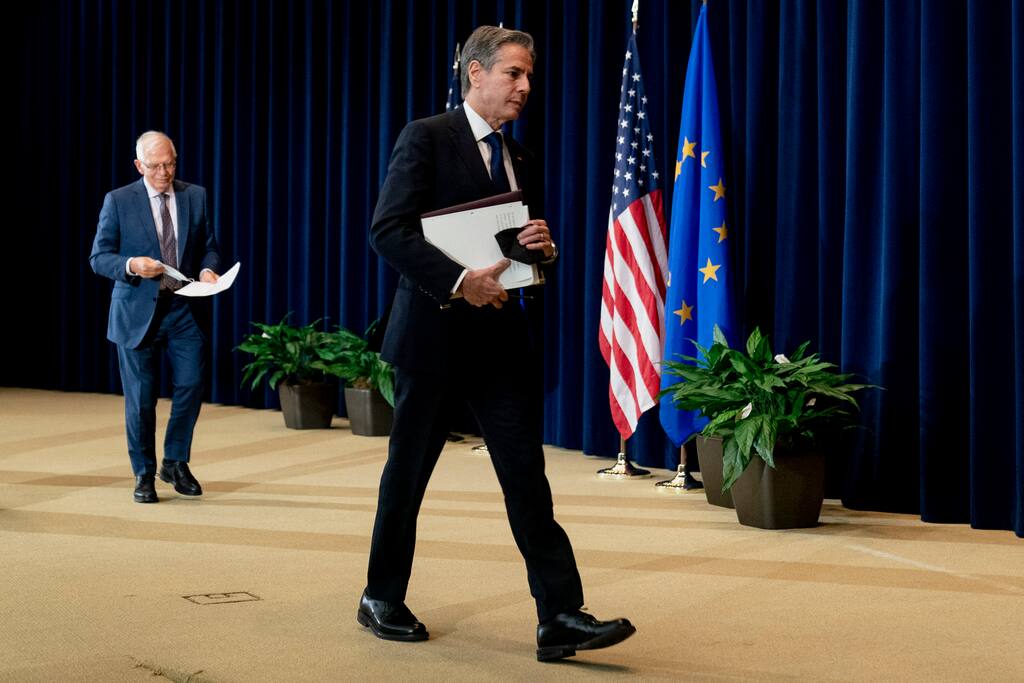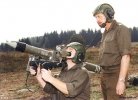Näitä sopii laittaa enempi sosiaaliseen mediaan kuin suomalaista pallinaamaa.Miksi 18 vuotiaat likat otetaan sotaan, mutta suomalaiset elämän koululaiset jotka haluaa mennä ampumaan ryssiä jätetään rannalle?
Install the app
How to install the app on iOS
Follow along with the video below to see how to install our site as a web app on your home screen.
Note: This feature may not be available in some browsers.
You are using an out of date browser. It may not display this or other websites correctly.
You should upgrade or use an alternative browser.
You should upgrade or use an alternative browser.
Ukrainan konflikti/sota
StepanRudanskij
Respected Leader
Tarina VV:n vapaaehtoisesta.
Liian paljon meikkiä mun makuun.
Pojaat ottaa keväisessä auringossa lunkisti.
Katso liite: IMG_7181.MOV
Katso liite: IMG_7181.MOV
Annas, kun mää arvaan. Sää kykenet käytännössä täysin huoltamaan polkupyöräsi. Jopa kiristämään pinnat kohdalleen vinkurasta vanteesta.On se sitäkin, mutta on se toki paljon muutakin. Ihmiset niitä kuitenkin lentää ja tietääkseni ukrainalaiset on myös ihmisiä.
Uuden konetyypin oppiminen kestää sen aikaa kuin kestää, joten ei muuta kuin oppimaan. Käsittääkseni ei ole ainakaan innokkuudesta kiinni, päinvastoin, niillähän sormet oikein syyhyää että pääsisivät aiempaa modernimpien koneiden puikkoihin. Ei kai se meidän ongelma ole. Se on niiden ongelma oppia ja hyödyntää koneita mahdollisimman tehokkaasti. Mitä siinä hävitään, jos tuonne vietäisiin jotain elämänsä ehtoopuolella olevia koneita...
Mutta tosiaan isoimmat ongelmat on poliittisia. Länsimaisia koneita ei ole haluttu viedä Ukrainaan koska ei ole haluttu. Pitäisi alkaa haluamaan.
Siltä pohjalta - kuinkas pitkään luulisit, että sää oppisit huoltamaan modernin henkilöauton kaikki laitteet? Siis niin hitsaamaan peltiä kuin juottamaan pintaliitoselektroniikkaa? Meniskö pikakurssilla parissa päivässä tai viikossa?
Se nyt ei vaan ole niin, että äkkiähän se pilotti oppii länsikonetta lentämään.
Viimeksi muokattu:
Daenerys Targaryen?
AMC
Ylipäällikkö
vähän vanhempaa kuvaa
Ja kuten Hollywood-leffoissa, ääni kulki valonnopeudella.Tulipas tuosta tussatuksesta Kummelin 'Kyllä lähtee'-sketsi mieleen
AMC
Ylipäällikkö
Mites toi rengashuolto zetamaassa toimii.
Koko hommahan alkoi reilu vuosikymmen sitten juuri kaasusta. Venäjä myi Ukrainalle kaasua halvalla ja samaa putkea pitkin Saksalle kalliilla. Sitten Venäjä halusi nostaa Ukrainan kaasun hintaa, mihin Ukraina ei suostunut voimassa oleviin sopimuksiin vedoten....Ukraina käsittääkseni itsekin käyttää vielä Venäjän kaasua ja maksaa siitä venäjälle
...ja nyt ollaan tässä.
Sinkoeinari
Luutnantti
Se on kyllä jännä, että vain taistelukokemusta omaavat otetaan, mutta mimmosta taistelukokemusta näillä teineillä oikeasti on verrattuna karkaistuun, INTin käyneeseen ja lukemattomat nakkikioskitaistelut nähneeseen kotimaan karjuun?Miksi 18 vuotiaat likat otetaan sotaan, mutta suomalaiset elämän koululaiset jotka haluaa mennä ampumaan ryssiä jätetään rannalle?


Mihin (Norjan pian Ukrainaan lähettämän 100 kpl ranskalaisvalmisteisen) Mistralin laukaisussa tarvitaan tuota luuripäistä huonoryhtistä herraa?
Katso liite: 60548
Kouluttaja? Googlen kuvahaulla löytyy monesta tuollainen isoveli..
Vastaan itselleni: ranskalaista byrokratiaa, eli Mistralia operoi komentaja ja ampuja:
It features a lightweight man-portable launcher. It can be easily transported and operated from the ground, a vehicle, a building, or a ship. MISTRAL MANPADS is normally operated by a gunner and a crew commander. However, if the mission is carried out in a simple tactical environment, it can be operated by one single soldier.

Ei ihan kaikista tehokkaimmalta sodankäynniltä vaikuta..
TimiFu
Kersantti
Aina voi tyynyn viskata päälle jos sille tuntuu että liikaa meikkiäMilloinkohan tulee ”liian paljon meikkiä mun makuun” kommentti…

Annas, kun mää arvaan. Sää kykenet käytännössä täysin huoltamaan polkupyöräsi. Jopa kiristämään pinnat kohdalleen vinkurasta vanteesta.
Siltä pohjalta - kuinkas pitkään luulisit, että sää oppisit huoltamaan modernin henkilöauton kaikki laitteet? Siis niin hitsaamaan peltiä kuin juottamaan pintaliitoselektroniikkaa? Menitkö pikakurssilla parissa päivässä tai viikossa?
Se nyt ei vaan ole niin, että äkkiähän se pilotti oppii länsikonetta lentämään.
Mikä se estää viemästä länsikoneita Ukrainaan ja sitten laittaa perässä riittävästi niiden lentäjiä? Vapaaehtoisia valmiita lentäjiä vain hommaa länsimaista ja niille sitten Ukrainan kansalaisuuden operaation ajaksi järjestää. Siinähän on sitten valmiita ukrainalaisia pilotteja niille. Problem solved.
FinnNSF
Ylipäällikkö
Se kovin kaukovaikutteinen ase tuhoaa Venäjää koko ajan. Se on talousase. Konkurssissa olevan maan on pakko ajaa kaikenlainen ylimääräinen, ml. päin seiniä menevä miehityssota ulkomailla, alas ja keskittyä selviämiseen ihan oman yhteiskuntansa perustehtävistä.Karttaa katsottuna vallattua aluetta on nyt laajennettu mutta eteneminen on kallista. Toisaalta Ukrainanankin on kallista ottaa isommin aloitetta. Ehkä kaukovaikutteiset länsiaseet tulevat sitten rooliin jään murtamiseksi.
Given Russia’s current military invasion of Ukraine, Moscow is unlikely to shift a large number of ground forces to the Baltic region. But if they do shift forces, several options exist for countervailing measures. Given both nations’ involvement in the British-led Joint Expeditionary Force, moving some element of the JEF forward might be attractive. Both nations have also participated in the NATO Response Force, which is already on high alert and ready for deployment. In extremes, American ground forces would also be available. Naval and air deployments should also be considered including for Baltic Sea naval exercises and a Nordic-Baltic area air defense zone, as Russian air and naval forces are more available for redeployment. Such conventional force deployments also could constitute a response to additional nuclear threats by Putin.
Another option which could be enacted very soon is to expedite defense cooperation under the 2018 trilateral Finnish-Swedish-U.S. defense cooperation agreement called the “Statement of Intent.” Actions could range from enhancing strategic planning; accelerating arms transfers; strengthening intelligence, surveillance, and reconnaissance cooperation; and adding multilateral exercises.
Finally, consideration might be given in this plan to defusing some of Russia’s concerns. For example, Finland could theoretically control naval passage to Saint Petersburg, and it is close geographically (as is NATO member Norway) to Russia’s nuclear and naval bastions on the Kola Peninsula. Assurances might be designed to reduce Russian fears in these areas, as long as any such confidence-building measures are reciprocal. In no case should any such assurances make Finland and Sweden second-tier NATO members with undue restrictions on force deployments.
NATO should also be ready to explain why rapid acceptance of Finland and Sweden is warranted while several NATO members are unwilling to accept Ukrainian membership. Principal reasons include that both nations are EU members while Ukraine is not, and that Article 10 of the Washington Treaty states new members must “contribute to the security of the North Atlantic area” which is difficult for Kyiv to do while partially occupied by Russian troops.

NATO Will Need a Transition Plan If Finland, Sweden Ask to Join
Putin will threaten the applicant countries and seek to derail the process.
Joudutaan tappelemaan jos halutaan Natoon, niin mä tämän luen.
Venäläiset tietävät mitä tapahtui ohjuksen osumisen jälkeen ja mutta mitä tapahtui sitä ennen saa pysyä salaisuutena.
Hi Suttonilla aiheesta artikkeli, mutta tällä hetkellä sivut alhaalla. Lienee siis oikeassa:
Kuvassa alus seuraavana päivänä, paha kallistuma ja edelleen savuttaa. Pelastuslautat otettu käyttöön. Muutama pumppu toimii ja ampuu kasteluvettä. Black outista puhuttiin, kai venäläinenkin ymmärtänyt asentaa palosammutuskalustolle omat järjestelmät.
Katso liite: 60542
FinnNSF
Ylipäällikkö
Tässä alkaa heräillä semmoiset tuntemukset että miksi Saksaan pitäisi suhtautua yhtään sen suopeammin kuin Ryssään, tai ainakaan Unkariin? Vähemmästäkin perseilystä on joutunut maailman laajuisen cancel-ilmiön tähtäimeen. #fuckgermanyEilen postasin sarkastisesti ja varovaisen optimistisesti että Saksa olisi tullut järkiinsä ja toimittavansa tavaraa Ukrainaan. Mutta todellisuudessa Saksa haisee enemmän kaalilta kuin Orbanin Unkari:
Timeline of Germanys Chanchlor Olaf Scholz promises on helping Ukraine:
1) At the end of February Germany's defense industry sends Scholz a long list of all available weapons.
2) Scholz doesn't share the list with Ukraine.
3) Scholz says that there are no more weapons left in Germany to give to Ukraine.
4) Germany's defense industry leakes the list to Ukraine's ambassador.
5) Scholz says that the weapons on the list don't work.
6) The defense industry denies this and leakes the list to the press.
7) Scholz states Ukrainians can't master the weapons in the available time.
8) German defense experts tell the German press that Ukrainians can master the weapons in 2-3 weeks.
9) Scholz says the weapons are needed by NATO and NATO must approve their transfer.
10) NATO officials and German generals deny this.
11) Scholz says no other NATO/EU ally is delivering heavy weapons to Ukraine.
12) The US, UK, Australia, Poland, Czechia, Slovakia, Romania, Turkey, Italy, Finland, Denmark, Romania, Netherlands, etc. publish the lists of heavy weapon they deliver to Ukraine.
13) Under pressure Scholz announces €2 billion for Ukraine's military.
14) German parliamentarians find out that it's really just €1 billion, which won't be available for another 2-3 months, and then Scholz can veto or delay indefinitely every item Ukraine wants to buy.
15) The US, France, Poland, Romania, Japan, the UK and Italy, plus the heads of EU and NATO spend an afternoon trying to talk sense into Scholz.
16) Scholz makes a statement and says Ukraine can have the €1 billion now and order whatever it wants from the list.
17) Ukraine's ambassador says that Scholz removed all the items Ukraine actually wants from the list before giving it to Ukraine and what remains on the list is just a fraction of the €1 billion.
Scholz isn't incompetent or mendacious... he just works for the russians.
Against the backdrop of Russia’s attack on Ukraine, U.S. and European Union officials are preparing a new meeting later this month officials hope will tie the two global players closer together on defense.
The event is meant to open an additional trans-Atlantic channel on security matters and complement similar communications already happening via NATO, officials have said. Having such a forum specifically for the trade-minded European Union would energize the bloc’s defense ambitions and signal Washington’s link to the continent on yet another level, the thinking goes.
Speaking at the Atlantic Council think tank earlier this month, Charles Fries, a senior official at the EU diplomatic service, said the “dialogue on security and defense” would happen later in April in Brussels. The specifics end there, however, with spokespersons at the U.S. State and Defense departments declining to name who would represent their respective agencies until closer to the event.
European Union chief diplomat Josep Borrell and Secretary of State Antony Blinken announced the “dialogue” format in early December 2021, to happen sometime in early 2022. American diplomats so far have led the charge on the initiative, leaving open the question of who from the Pentagon would lend the affair the requisite defense credentials.
Since the announcement late last year, Russia’s war on Ukraine has fused Western nations, through NATO and the EU, on sanctions as well as humanitarian and military support to Kyiv. But the assault also has shown only the United States can ultimately muster the kinds of military deterrence measures in Europe taken seriously by Moscow.
That dynamic introduces the conundrum of how best to expose the European Union’s own capability-development schemes and military funding streams to American policy and business interests without smothering the bloc’s hope for autonomy.
Fries said six U.S. companies are already plugged into the nascent EU defense bureaucracy by way of their membership in industry consortia led by European companies. In addition, he said, the Pentagon is prominently involved in a Dutch-led project to ease the flow of troops and military equipment across European Union member nations.
“Of course it’s European taxpayer money,” Fries said. “So you can understand that when you have European taxpayer money it must be above all used for European companies and European products. But it’s an open instrument; I insist on that.”
Previously, officials on both sides of the Atlantic had wanted to finish negotiating a key document on their defense relationship, a so-called administrative arrangement between the U.S. Defense Department and the European Defence Agency, before holding the first “dialogue” meeting.
But as of earlier this month, negotiations were still ongoing, according to Molly Montgomery, deputy assistant secretary in the Bureau of European and Eurasian Affairs at the State Department, who spoke alongside Fries at the Atlantic Council.
The pact would allow routine interactions between American and EU institutions on defense issues and open the door for U.S. defense contractors to participate in the bloc’s growing defense spending under certain conditions.
The specifics remain thorny, but finding common ground is considered paramount on both sides of the Atlantic.
“These are can be difficult topics, and they get into questions of competition, industrial bases that have often been challenging in the past,” Montgomery said. “Having a forum to discuss these issues and a commitment that we will work together as closely as possible, particularly at a time when it’s so important for us to get the maximum value that we can for that increase in defense spending that we’re seeing, it’s really crucial that we work together as constructively as possible.”

First-ever defense talks between US, EU near amid Ukraine war
Mission impossible? Washington wants in on the EU's growing defense ecosystem without exacerbating an already glaring power imbalance.



